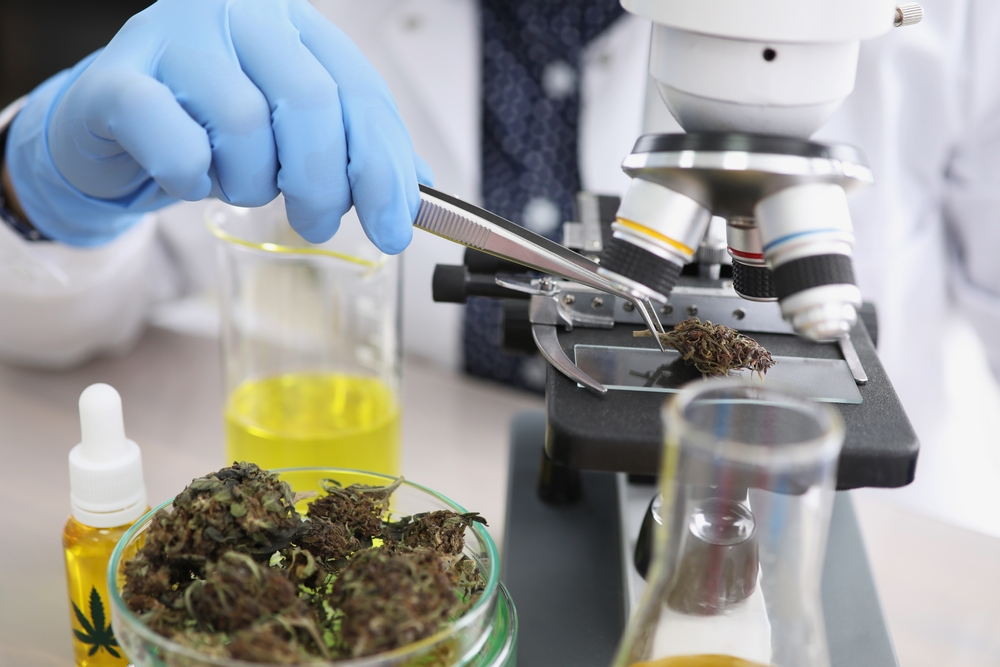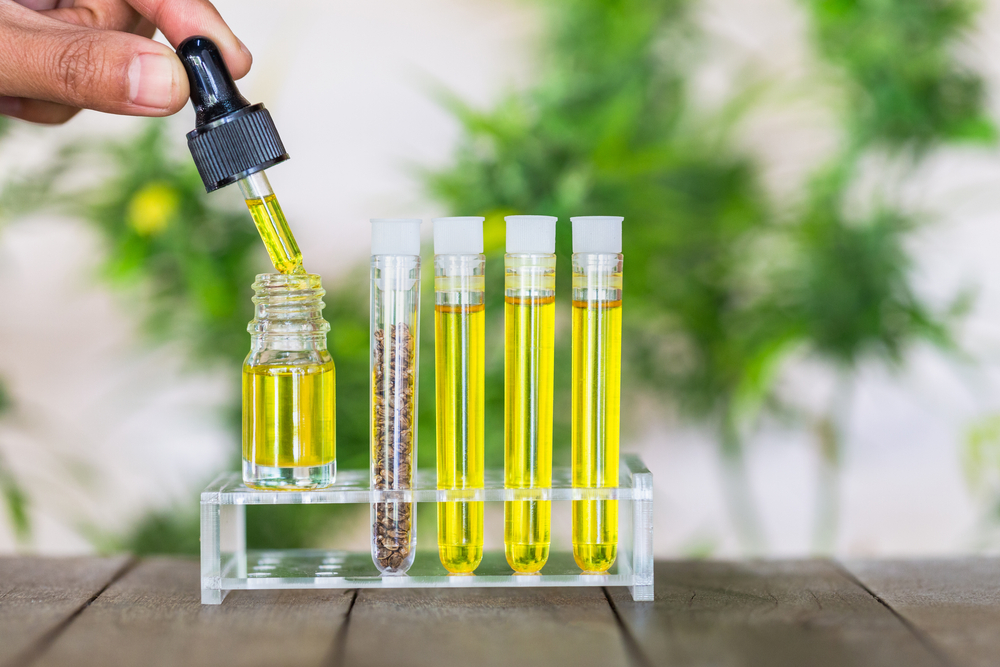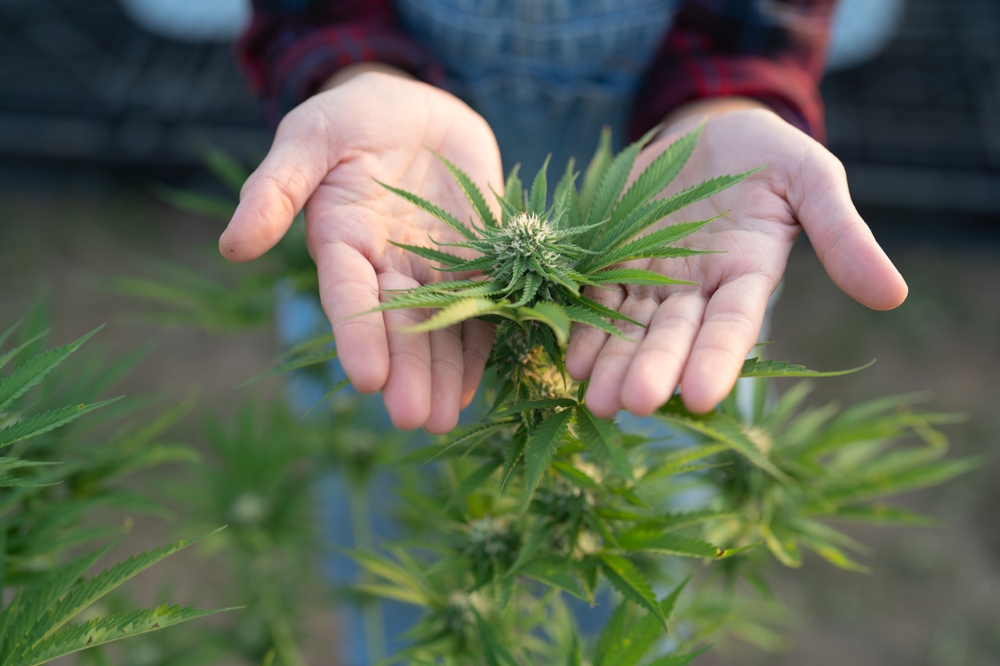Table of Contents
Introduction
In the ever-evolving landscape of cannabinoids, a fascinating newcomer has emerged, captivating the attention of researchers and enthusiasts alike. Its name is H4CBD, or Hexahydrocannabidiol, a unique derivative of cannabidiol (CBD). While CBD has long been celebrated for its potential therapeutic benefits, H4CBD introduces an intriguing twist to the world of cannabinoids, bringing with it a fresh wave of scientific inquiry and exploration.
At its core, H4CBD represents a departure from the familiar structure of CBD, undergoing a chemical modification that bestows it with distinct properties and potential applications. As we delve deeper into the realm of H4CBD, we uncover a compound that challenges our understanding of cannabinoids, opening up new possibilities for therapeutic interventions and enhancing our knowledge of the intricate workings of the human body.
While CBD has become a household name for its non-intoxicating nature and potential health benefits, H4CBD adds a new dimension to the cannabinoid landscape. Its unique structure begs the question: What sets it apart from its well-known counterpart? What potential benefits does it hold? And how does it interact with our body’s intricate systems?
In this article, we embark on an exploration of H4CBD, shedding light on its composition, potential benefits, mechanism of action and safety profile. As we navigate the realm of H4CBD, it is essential to approach our exploration with an open mind, allowing science and research to guide us. So join us on this captivating journey, as we embark on an enlightening odyssey through the mysterious world of H4CBD, unlocking its secrets and discovering the potential it holds for the well-being of humankind.

A brief explanation of cannabinoids and their effects on the body
Cannabinoids are a diverse group of chemical compounds found naturally in cannabis plants and also produced in the human body. They interact with a complex network of receptors known as the endocannabinoid system (ECS), which plays a crucial role in regulating various physiological processes in the body.
When cannabinoids enter the body, they can bind to particular receptors in the ECS, specifically the CB1 and CB2 cannabinoid receptors. All parts of the body, including the brain, immune system, organs, and perivascular tissues, contain these receptors. Neurotransmitter release and cellular communication are both influenced by the interaction between cannabis and these receptors.
The effects of cannabinoids on the body are wide-ranging and can vary depending on the specific cannabinoid and its interaction with the ECS. One of the most well-known cannabinoids is delta-9-tetrahydrocannabinol (THC), which is responsible for the psychoactive effects commonly associated with cannabis use. THC primarily binds to CB1 receptors in the brain, leading to a euphoric high and altering perception, mood, and cognition.
Cannabidiol (CBD), on the other hand, is a non-intoxicating cannabinoid that has drawn a lot of interest for its possible therapeutic benefits. Although CBD interacts with CB1 and CB2 receptors, it does not have the same euphoric effects as THC. Instead, other mechanisms, including as the modulation of neurotransmitter release, anti-inflammatory properties, and contact with non-cannabinoid receptors, are thought to be how CBD affects the body.
The effects of cannabinoids on the body go beyond the traditional psychoactive and therapeutic properties. It’s important to note that while cannabinoids hold promise for various health applications, further research is needed to fully understand their mechanisms of action and potential therapeutic benefits. Additionally, individual responses to cannabinoids can vary, and the use of cannabinoids should be approached with caution and under the guidance of healthcare professionals.
Unique properties of Hexahydrocannabidiol
Hexahydrocannabidiol (H4CBD) is a cannabis derivative that differs from its well-known cannabinoid cousin in a number of ways. H4CBD presents a structural alteration that results in distinctive properties by a chemical modification of the CBD molecule, potentially opening up new opportunities in the field of therapeutic applications.
One of the notable aspects of H4CBD is its altered chemical structure. While CBD features a cyclic ring structure, H4CBD undergoes a reduction process that converts this ring into a saturated hexahydro derivative. This modification gives H4CBD a different three-dimensional shape and alters its interactions with receptors and enzymes within the body.
The unique structure of H4CBD may lead to several intriguing properties. First, it has the potential to influence the binding affinity and selectivity of the compound for specific receptors within the endocannabinoid system (ECS). This altered binding profile may result in different pharmacological effects compared to CBD and other cannabinoids, potentially opening up new avenues for therapeutic interventions.
Moreover, the modified structure of H4CBD may also impact its metabolic stability and bioavailability. These factors play a crucial role in how the compound is absorbed, distributed, metabolized, and eliminated by the body. Understanding the pharmacokinetic properties of H4CBD is essential for optimizing its therapeutic use and determining appropriate dosage regimens.
Furthermore, the unique properties of H4CBD extend beyond its structural distinctions. Preliminary studies and research on H4CBD suggest that it may possess distinct pharmacological activities compared to other cannabinoids. For example, H4CBD has been investigated for its potential anti-inflammatory effects, analgesic properties, and neuroprotective activity. These findings highlight the compound’s potential as a therapeutic agent for various health conditions.
What is H4CBD?
Definition and chemical structure of H4CBD
H4CBD, also known as Hexahydrocannabidiol, is a synthetic derivative of cannabidiol (CBD), one of the primary cannabinoids found in cannabis plants. It is created through a chemical modification of the CBD molecule, resulting in a unique and distinct compound with its own properties and potential applications.
In terms of its chemical structure, H4CBD features a saturated hexahydro ring system. This means that it has undergone a reduction process, converting the cyclic ring structure of CBD into a fully saturated form. This alteration gives H4CBD a different three-dimensional arrangement, setting it apart from CBD and other cannabinoids.
The structural modification of H4CBD has significant implications for its interactions within the body. While CBD interacts with cannabinoid receptors such as CB1 and CB2, the altered structure of H4CBD may result in different binding affinities and selectivities for these receptors. This unique binding profile has the potential to influence the compound’s pharmacological effects and therapeutic applications.
Furthermore, the modified chemical structure of H4CBD may also impact its metabolic stability and bioavailability. These factors determine how efficiently the compound is absorbed, distributed, metabolized, and eliminated within the body. Understanding the pharmacokinetic properties of H4CBD is crucial for optimizing its therapeutic use and determining appropriate dosage regimens.
It is important to note that H4CBD is a synthetic derivative and is not found naturally in cannabis plants. Instead, it is synthesized in a laboratory setting using specific chemical reactions and processes. This allows for precise control over the compound’s production and purity.
The unique definition and chemical structure of H4CBD makes it an intriguing and promising compound for scientific exploration and potential therapeutic applications. While still in the early stages of research, H4CBD holds the potential to broaden our understanding of cannabinoids and expand the range of therapeutic interventions available.

H4CBD comparison to other Cannabinoids like CBD and THC
H4CBD, CBD, and THC are all cannabinoids, but they differ in various aspects, including their chemical structures, psychoactive effects, and potential therapeutic applications.
Firstly, in terms of chemical structure, H4CBD and CBD share a common origin, as H4CBD is a synthetic derivative of CBD. However, H4CBD undergoes a chemical modification that results in a unique hexahydro ring structure, setting it apart from CBD. On the other hand, THC has a different chemical structure altogether, featuring a cyclic ring with a pentyl side chain. These structural differences contribute to variations in their interactions with cannabinoid receptors and other molecular targets within the body.
Another significant distinction lies in their psychoactive effects. THC is well-known for its intoxicating properties, producing the characteristic “high” or euphoria associated with cannabis use. It binds strongly to CB1 receptors in the brain, leading to alterations in perception, mood, and cognition. In contrast, CBD and H4CBD are considered non-intoxicating, meaning they do not produce the same psychoactive effects as THC. While CBD and H4CBD may influence mood and relaxation to some extent, they are not associated with the pronounced euphoria caused by THC.
Moreover, their potential therapeutic applications differ. THC is primarily recognized for its analgesic (pain-relieving), antiemetic (anti-vomiting), and appetite-stimulating properties. It is commonly used in medical settings for conditions such as chronic pain, nausea, and vomiting associated with chemotherapy, and appetite stimulation in certain illnesses. CBD, on the other hand, has garnered attention for its potential anti-inflammatory, anxiolytic (anti-anxiety), and neuroprotective effects. It has been explored as a potential treatment for conditions like epilepsy, anxiety disorders, and inflammation-related disorders. While H4CBD is a newer derivative, preliminary research suggests it may possess unique pharmacological activities, such as anti-inflammatory and analgesic effects, but further investigation is needed to determine its specific therapeutic applications.
In summary, H4CBD, CBD, and THC differ in their chemical structures, psychoactive effects, and therapeutic potentials. H4CBD, as a derivative of CBD, possesses its own distinct properties and may offer unique therapeutic possibilities. Understanding these differences is crucial for making informed decisions about the appropriate use and potential benefits of these cannabinoids in various contexts.
How H4CBD is derived or synthesized
H4CBD, or Hexahydrocannabidiol, is a synthetic derivative of cannabidiol (CBD) that is created through a chemical synthesis process in a laboratory setting. The synthesis of H4CBD involves specific reactions and modifications to the CBD molecule, resulting in the formation of the unique compound.
The synthesis of H4CBD typically begins with the isolation of CBD from cannabis plant material. CBD can be extracted from various cannabis strains using different extraction methods, such as CO2 extraction or solvent-based extraction. Once CBD is obtained in its pure form, it serves as the starting material for the synthesis of H4CBD.
The chemical synthesis of H4CBD involves a reduction process. This reduction process converts the cyclic ring structure of CBD into a saturated hexahydro form, resulting in the formation of H4CBD. The reduction is achieved by utilizing specific chemical agents or catalysts under controlled conditions. These reactions modify the molecular structure of CBD, altering its three-dimensional arrangement and producing H4CBD as a distinct compound.
The synthesis of H4CBD allows for precise control over the production of this compound, ensuring consistent quality and purity. Laboratory synthesis also offers the opportunity to explore variations and modifications of the H4CBD structure, potentially leading to the development of other novel derivatives with unique properties.
It is important to note that H4CBD is a synthetic derivative and is not naturally occurring in cannabis plants. The ability to synthesize H4CBD in a controlled laboratory environment provides researchers and scientists with a valuable tool for studying its properties, potential therapeutic applications, and interactions within the body.
The process of synthesizing H4CBD is continually evolving as researchers strive to refine the methods and understand their potential benefits further. Ongoing research and development in the field of cannabinoid synthesis contribute to expanding our knowledge and opening new possibilities in the realm of therapeutic interventions and cannabinoid-based medicines.
Potential Benefits of H4CBD
H4CBD, the hexahydro derivative of cannabidiol (CBD), holds promise as a therapeutic compound with potential benefits across various areas of medicine. While research is still in its early stages, preliminary studies and anecdotal evidence suggest several potential benefits of H4CBD.
One area where H4CBD shows promise is pain management. Cannabinoids, including CBD, have been studied for their analgesic properties. H4CBD, with its unique chemical structure, may offer a new avenue for pain relief. By interacting with the endocannabinoid system (ECS), H4CBD has the potential to modulate pain perception and reduce inflammation, making it a potential candidate for managing chronic pain conditions.
The neuroprotective effects of cannabinoids have also been a subject of interest, and H4CBD is no exception. Research suggests that cannabinoids can protect nerve cells from damage, potentially offering therapeutic benefits for neurodegenerative disorders such as Parkinson’s disease and multiple sclerosis. H4CBD’s distinct structure may contribute to its neuroprotective properties, making it an intriguing candidate for further investigation in this field.
Another potential benefit of H4CBD lies in its anti-inflammatory properties. Inflammation plays a crucial role in various diseases and conditions, including autoimmune disorders and chronic inflammatory conditions. CBD has demonstrated anti-inflammatory effects, and H4CBD may possess similar or enhanced properties due to its altered chemical structure. By modulating inflammation, H4CBD could potentially be beneficial in managing inflammatory conditions and reducing associated symptoms.
Furthermore, CBD has shown promise in reducing anxiety symptoms and potentially aiding in the management of mental health conditions such as generalized anxiety disorder and post-traumatic stress disorder. While research specifically on H4CBD is limited, its unique properties may contribute to its potential efficacy in anxiety reduction and stress management.

Mechanism of Action
How H4CBD interacts with the endocannabinoid system
H4CBD interacts with the endocannabinoid system (ECS), a complex network of receptors, enzymes, and endocannabinoids within the body. Like other cannabinoids, H4CBD binds to cannabinoid receptors, primarily CB1 and CB2 receptors, although its specific binding affinity and selectivity may differ from other cannabinoids.
By interacting with these receptors, H4CBD can modulate various physiological processes and signaling pathways in the body. The activation of CB1 receptors, which are primarily located in the central nervous system, may contribute to the compound’s potential effects on pain perception, mood regulation, and neurological function.
CB2 receptors, found predominantly in immune cells and peripheral tissues, play a role in immune responses, inflammation, and other immune-related processes. H4CBD’s interaction with CB2 receptors may contribute to its potential anti-inflammatory and immunomodulatory properties.
Additionally, H4CBD may influence other components of the ECS, such as inhibiting the breakdown of endocannabinoids or interacting with other receptor systems, further contributing to its overall effects on the body. As research progresses, a deeper understanding of H4CBD’s precise mechanisms of action within the endocannabinoid system will help elucidate its potential therapeutic applications and guide future development in the field.
Effects on specific receptors and neurotransmitters
H4CBD, as a derivative of cannabidiol (CBD), may exert its effects on specific receptors and neurotransmitters within the body. While research on H4CBD is limited compared to CBD and other cannabinoids, it is believed to interact with various receptors and neurotransmitter systems, influencing physiological processes and signaling pathways.
One important receptor system that H4CBD may interact with is the endocannabinoid system (ECS), primarily through the activation of CB1 and CB2 receptors. By binding to these receptors, H4CBD can modulate pain perception, mood regulation, and neurological function. Additionally, H4CBD may affect other neurotransmitter systems such as serotonin, dopamine, and glutamate, which play crucial roles in mood, cognition, and overall brain function.
By influencing the activity of these neurotransmitters, H4CBD has the potential to impact various physiological and psychological processes. However, further research is needed to fully understand the specific effects of H4CBD on these receptors and neurotransmitters and how they contribute to their overall therapeutic potential.
The potential pathways for therapeutic effects of H4CBD, the hexahydro derivative of cannabidiol (CBD), are multifaceted and are still being explored. H4CBD may exert its therapeutic effects through various mechanisms, including interactions with the endocannabinoid system (ECS) and modulation of neurotransmitter systems. By interacting with cannabinoid receptors, particularly CB1 and CB2 receptors, H4CBD may regulate pain perception, inflammation, and immune responses.
Furthermore, H4CBD’s influence on neurotransmitters such as serotonin, dopamine, and glutamate may contribute to its potential effects on mood, cognition, and neurological disorders. Additionally, H4CBD’s unique chemical structure may confer novel pharmacological properties that differentiate it from other cannabinoids, potentially opening up new therapeutic pathways.
Safety and Side Effects
Known side effects of H4CBD
Common side effects associated with CBD use, although rare and generally mild, include drowsiness, dry mouth, diarrhea, and changes in appetite or weight. It is also crucial to consider that individual responses to cannabinoids can vary, and some people may be more sensitive to certain compounds.
As with any new therapeutic substance, it is advisable to consult with healthcare professionals before using H4CBD, especially if there are underlying health conditions or if other medications are being taken, to ensure safety and minimize potential risks.
Comparison to CBD and THC in terms of the safety profile
H4CBD, CBD, and THC each have unique safety characteristics that should be taken into account. CBD has a good safety profile and is typically well tolerated. It is not euphoric and does not have the THC-related psychotropic effects. CBD frequently causes moderate side effects including tiredness, dry mouth, and stomach discomfort. Additionally, CBD is thought to have a low risk of abuse or addiction.
On the other hand, THC is known for its psychoactive effects and potential to cause intoxication. It is associated with short-term cognitive impairment, euphoria, and increased heart rate. THC can also produce anxiety or paranoia, particularly in high doses or in individuals who are sensitive to its effects. Additionally, long-term heavy use of THC may have implications for mental health and can lead to dependency.
The safety profile of H4CBD, a synthetic derivative of CBD, is presently being investigated. While preliminary research points to its potential medicinal applications, more studies are required to fully evaluate its safety and adverse effects. It is crucial to remember that the structural changes in H4CBD may modify how it interacts with physiological systems and receptors, thereby influencing its safety profile in comparison to CBD. To fully comprehend the safety and long-term consequences of H4CBD, more investigation and clinical trials are required.
In summary, CBD has a favorable safety profile, with mild and infrequent side effects, while THC is associated with psychoactive effects and potential short-term cognitive impairments.

Precautions and considerations for usage
When using H4CBD or any cannabinoid compound, it is important to take precautions and consider certain factors to ensure safe and responsible usage. Here are some key precautions and considerations to keep in mind:
Consultation with Healthcare Professionals: Before incorporating H4CBD into your regimen, consult with healthcare professionals who are knowledgeable about cannabinoids. They can provide guidance based on your specific health condition, medications, and individual needs.
Quality and Source: Ensure that the H4CBD product you choose is from a reputable source and undergoes third-party testing for quality, potency, and purity. This helps ensure that you are using a reliable and safe product.
Start with Low Dosage: Begin with a low dosage of H4CBD and gradually increase it if needed. This allows you to assess your body’s response and determine the optimal dosage for your individual needs.
Potential Side Effects: While the specific side effects of H4CBD are not well-established, be aware of potential side effects associated with cannabinoids, such as drowsiness, dry mouth, or gastrointestinal discomfort. If you experience any adverse effects, reduce the dosage or discontinue use and consult with a healthcare professional.
Drug Interactions: H4CBD may interact with certain medications, especially those metabolized by liver enzymes. If you are taking any medications, consult with a healthcare professional to determine if there are any potential interactions.
Individual Sensitivity: Everyone’s response to cannabinoids can vary, so be mindful of your individual sensitivity. Start with a low dosage and listen to your body’s signals. If you are unsure or have concerns, seek advice from healthcare professionals.
Pregnancy and Breastfeeding: It is recommended to avoid using H4CBD during pregnancy or while breastfeeding, as the effects on the developing fetus or infant are not well-understood.
Factors to consider when purchasing H4CBD products
When purchasing H4CBD products, there are several important factors to consider to ensure a safe and satisfactory experience. First and foremost, it is crucial to choose products from reputable and trustworthy manufacturers. Look for companies that have a good reputation, transparent production processes, and third-party lab testing to verify the quality, purity, and potency of their H4CBD products.
Additionally, consider the source of the H4CBD. Opt for products derived from organic hemp plants that are grown in regulated environments to minimize the risk of exposure to harmful contaminants. It is also essential to check the product’s label for accurate and clear information about the H4CBD concentration and dosage guidelines.
This will help you determine the appropriate dosage for your needs. Furthermore, consider the form of the product that suits your preferences, such as oils, capsules, edibles, or topicals. Lastly, take into account customer reviews and feedback to gain insights into the product’s effectiveness and overall customer satisfaction. By considering these factors, you can make an informed decision and select high-quality H4CBD products that align with your specific requirements and provide the desired effects.
Conclusion
In conclusion, H4CBD, the hexahydro derivative of cannabidiol (CBD), holds promising potential as a cannabinoid compound. With its unique chemical structure and potential therapeutic properties, H4CBD offers an intriguing avenue for further research and exploration.
While there is still much to learn about H4CBD and its specific effects on the body, early studies, and anecdotal evidence suggest a range of potential benefits. However, it is essential to approach H4CBD with caution, considering factors such as legal status, regulations, and individual considerations. As with any cannabinoid product, it is crucial to consult with healthcare professionals and adhere to responsible usage guidelines.





